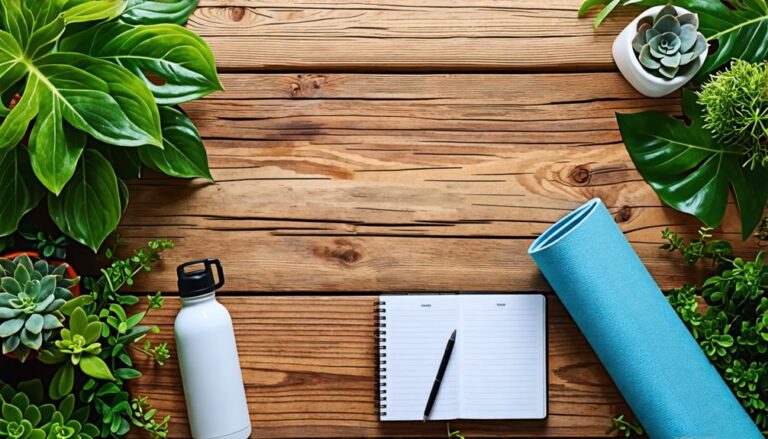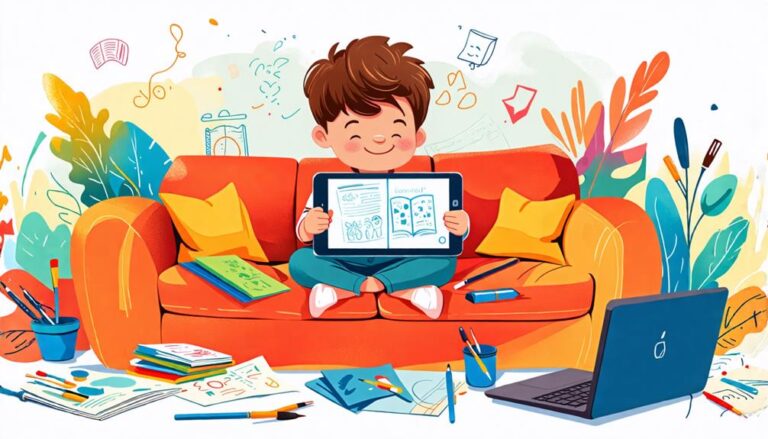Creating children's book illustrations involves a delicate balance of artistic expression and storytelling skills. To implement this side hustle, follow these key steps:
- Understand the narrative: Distill the essence of the story, identifying key characters, settings, and plot points that will drive the visual representation.
- Develop your artistic style: Cultivate a unique visual voice through the use of color, texture, and composition, ensuring your artwork resonates with young audiences.
- Create engaging characters: Bring characters to life through expressive illustrations that capture their personalities, emotions, and traits.
- Design immersive settings: Use visual elements to transport readers into the story's world, establishing atmosphere and mood.
- Consider emotional resonance: Be mindful of the emotional impact your artwork may have on young readers, aiming to inspire and captivate without overwhelming or frightening.
- Refine your craft: Continuously develop your skills through practice, experimentation, and feedback from peers, editors, or art directors.
- Build a portfolio: Establish a body of work showcasing your illustration style and versatility, essential for attracting clients or publishers.
- Network and market yourself: Attend industry events, join online communities, and create a strong online presence to promote your services and attract potential clients.
By following these steps, you can establish a successful children's book illustration side hustle, creating engaging and inspiring artwork that brings stories to life for young readers.
Developing Your Unique Style
Crafting a distinctive brand voice is an essential aspect of a side hustle, allowing entrepreneurs to weave a narrative thread that is both authentic and compelling.
As a side hustler, your brand style is a reflection of your entrepreneurial spirit, shaped by a kaleidoscope of influences, experiences, and inspirations. The journey of developing your unique brand style is a winding path of discovery, marked by moments of triumph and experimentation.
As you navigate this creative odyssey, your brand evolution will be influenced by a myriad of entrepreneurial influences. You may find yourself drawn to the innovative approach of Gary Vaynerchuk, the creativity of Chris Guillebeau, or the expertise of Pat Flynn.
These inspirations will blend with your own experiences, interests, and passions, ultimately forging a brand voice that is unmistakably yours. Embracing this process, with all its twists and turns, will allow you to craft a brand style that is authentic, imaginative, and alluring – a style that will resonate with your target audience and set your side hustle apart.
Understanding Your Target Audience
Understanding Your Target Market
At the heart of every successful side hustle lies a deep understanding of its target market, a group of customers whose needs and pain points are waiting to be addressed. To create effective marketing strategies and products, it's vital to take into account the demographics and interests of your target audience.
What resonates with a busy professional may not resonate with a stay-at-home parent. Understanding demographic appropriateness guarantees your products and services speak to your audience's unique needs and experiences.
Effective side hustles also require thoughtful customer understanding. Incorporating diverse perspectives, pain points, and motivations can help you tailor your offerings to meet the specific needs of your target market. This, in turn, fosters customer loyalty, retention, and a deeper connection to your brand.
Reflect on the following key aspects when understanding your target market:
- Demographics and socioeconomic status
- Interests and pain points
- Buying habits and behaviors
- Individual differences and preferences
Crafting a Visual Storyline
In the world of freelance illustration, a visual storyline is the thread that weaves together a tapestry of imagination, transporting clients to new and fantastical domains. A well-crafted visual narrative can captivate, educate, and inspire, making it an indispensable element in the art of freelance illustration. Effective storytelling techniques, such as pacing, composition, and character development, are vital in creating an engaging visual storyline for clients' projects, such as children's books, graphic novels, or animations.
| Visual Storytelling Techniques | Description |
|---|---|
| Pacing | Controls the speed at which the story unfolds, using elements like page turns and panel layouts to meet the client's narrative goals. |
| Composition | Directs the viewer's attention, using principles like balance, contrast, and negative space to create visually appealing artwork for clients. |
| Character Development | Reveals character traits, emotions, and relationships through facial expressions, body language, and interactions, helping clients convey their desired message. |
| Symbolism | Incorporates symbols, motifs, and metaphors to add depth, meaning, and layers to the narrative, enhancing the overall impact of the client's project.
Working With Authors and Publishers
As a freelance illustrator, working with authors and publishers presents a lucrative side hustle opportunity. By joining forces with writers and publishing professionals, you can bring your artistic vision to life while generating additional income.
The benefits of this partnership are multifaceted:
- Increased earning potential through commissioned work and royalties
- Exposure to new audiences and industries, such as children's books, editorial content, and advertising
- Opportunities for skill-building and professional growth through collaboration with experienced authors and publishers
- Flexibility to work on a project-by-project basis, allowing for autonomy and control over your schedule
Choosing the Right Medium
Creating enchanting children's book illustrations requires a thoughtful selection of medium, one that harmonizes with the narrative's tone and emotional resonance.
The right medium can elevate the visual storytelling, transporting young readers to mesmerizing worlds and fostering a deeper connection with the characters.
From the tactile expressiveness of traditional art supplies to the versatility of digital drawing options and the inventive possibilities of mixed media techniques, the choice of medium is a vital aspect of the illustrator's craft.
Traditional Art Supplies
Selling traditional art can be a lucrative side hustle, but creating art that resonates with buyers requires more than just talent – it demands the right tools. From the tactile thrill of mixing paints to the expressive scratch of a graphite pencil, selecting the right traditional art supplies is an essential step in creating artwork that sells.
When it comes to choosing art supplies, the possibilities can seem endless, but a few essential tools and techniques can help artists create pieces that captivate audiences and drive sales.
To create artwork that stands out in a crowded market, the following traditional art supplies can't be beat:
- Watercolor paints for luminous, layered color
- Graphite pencils for versatile, expressive shading
- Pastel crayons for vibrant, textured strokes
- Charcoal for gestural, spontaneous sketches
Watercolor techniques, with their characteristic softness and unpredictability, can lend artwork a dreamy, ethereal quality that resonates with buyers.
Pencil shading, on the other hand, provides a more controlled, nuanced approach to texture and tone. Each medium brings its unique character to the table, and combining different techniques can yield rich, visually appealing results that drive sales.
Digital Drawing Options
With a world of creative possibilities at their fingertips, side hustlers can now tap into a vast array of digital drawing options that rival the expressiveness of traditional art supplies. This makes it easier than ever to choose the perfect medium to bring their freelance illustration projects to life. Digital tools, such as illustration software, offer a range of benefits, including flexibility, precision, and speed. Freelance illustrators can experiment with different techniques, from bold brushstrokes to intricate textures, all within a virtual environment.
Popular illustration software, like Adobe Photoshop and Procreate, provide an intuitive interface for side hustlers to explore their creativity and take on freelance work. These programs offer a vast library of brushes, colors, and effects, allowing illustrators to achieve unique and enthralling visuals. Additionally, digital drawing options enable easy editing and revisions, streamlining the freelance workflow.
With the ability to work efficiently and effectively, side hustlers can focus on delivering high-quality illustrations to clients, crafting engaging and enchanting visuals that drive business results. By embracing digital drawing options, freelance illustrators can access new creative possibilities, expand their client base, and produce high-quality artwork that earns them a steady income.
Mixed Media Techniques
As a side hustle, creating children's book illustrations can be a fulfilling venture, especially when leveraging mixed media techniques. By combining traditional and digital art forms, freelance illustrators can unlock a vast creative playground, experimenting with innovative methods to produce captivating visuals. This approach allows artists to merge the organic textures of traditional media with the precision of digital tools, resulting in illustrations that breathe life into stories.
To create rich, layered artworks that engage young viewers, consider these essential mixed media techniques:
- Integrating hand-painted elements with digital backgrounds
- Incorporating scanned textures and patterns into digital artworks
- Applying collage techniques to merge disparate materials and textures
- Experimenting with texture application through mediums like paper, fabric, or found objects
By thoughtfully blending traditional and digital media, illustrators can discover new avenues of artistic expression, crafting immersive worlds that enchant young audiences.
Pushing the boundaries of mixed media techniques allows artists to redefine the visual language of children's book illustrations, creating memorable stories that resonate with readers of all ages.
Designing Engaging Characters
In the enchanted domain of children's book illustrations, designing engaging characters is an art that breathes life into the story.
Effective character design hinges on mastering three essential elements: the nuances of character expression, the emotional resonance of color palette selections, and the unique charm of facial feature design.
Character Expression Techniques
By skillfully employing an array of visual cues in their digital art or illustration side hustle, freelancers can craft characters that convey distinct personalities and emotions, enchanting clients and drawing them into the narrative.
Effective character expression techniques are vital for emotion conveyance, allowing clients to connect with the story on a deeper level and ultimately leading to increased satisfaction and repeat business. One of the key aspects of character expression is gesture dynamics, which involves using body language and movement to convey emotions and personality traits.
Some essential techniques for crafting engaging character expressions in a side hustle include:
- Using facial expressions to convey emotions, from subtle smiles to exaggerated grimaces, to bring characters to life in client projects.
- Employing body language to reveal character traits, such as slouching to indicate shyness or standing tall to show confidence, in illustrations or animations.
- Incorporating distinctive gestures, like a character's signature wave or thumbs-up, to make client projects more memorable.
- Utilizing posture and movement to convey energy and emotion, such as bouncing up and down to show excitement, in digital art or animation projects.
Color Palette Selection
Selecting a vibrant and harmonious color palette is vital for designing engaging characters in illustrations offered as a side hustle in freelance children's book illustration services. A well-crafted color scheme can evoke emotions, convey personality, and add depth to a character's design, ultimately making an illustrator's services more marketable to potential clients.
When choosing a color palette, consider the mood and atmosphere you want to create for a client's project. Warm colors like orange and red can stimulate excitement and energy, while cool colors like blue and green can promote calmness and serenity.
To achieve color harmony, select colors that work well together regarding hue, saturation, and contrast, allowing freelance illustrators to differentiate their services and justify higher rates. Analogous colors, such as different shades of blue, can create a soothing and cohesive look, while complementary colors, like blue and yellow, can produce a bold and playful effect that sets an illustrator's work apart from others.
The emotional impact of your color palette is also significant, as it can influence how clients respond to your illustrations and affect word-of-mouth referrals for your side hustle. By choosing colors that resonate with a character's personality and traits, you can create a strong emotional connection with clients and build a loyal customer base.
Facial Feature Design
Crafting engaging facial features for characters is a crucial aspect of illustration, a lucrative side hustle for artists. A well-designed face can convey emotions, traits, and intentions, making the character relatable and memorable to clients.
When offering custom illustration services, facial proportions play a significant role in creating an engaging character. A face that is too symmetrical or perfect may come across as unnatural, while subtle imperfections can add character and charm.
To create marketable illustrations, consider the following key elements when designing facial features:
- Eyes that sparkle with curiosity and kindness can draw clients in and create an instant connection, increasing the likelihood of repeat business.
- A gentle, enigmatic smile can convey a sense of approachability and mystery, making the character more appealing to potential clients.
- Eyebrows that dance with emotion can add a touch of whimsy and humor, setting an illustrator's work apart from others in the industry.
- Noses that wrinkle with concentration or excitement can convey a sense of determination and enthusiasm, making the character more relatable to clients.
Bringing Illustrations to Life Digitally
As a side hustler in digital illustration, you can bring children's book art to life by combining traditional techniques with innovative software. With illustration software, you can experiment with digital brushes that mimic watercolors, acrylics, or pastels, and apply animation techniques to create captivating characters.
Incorporating visual metaphors, symbolism, and motifs that resonate with children's experiences and emotions can help you craft engaging storytelling elements.
When designing interactive digital books, consider user interface and interactive features that invite children to participate in the storytelling process. Staying current with design trends and technologies allows you to push creative boundaries and innovate.
Through a thoughtful and iterative process, you can achieve a clear visual hierarchy, guiding the viewer's eye through the composition and conveying the narrative's emotional arc. By harnessing digital tools, you can create immersive, imaginative worlds that transport young readers to magical domains, setting your side hustle apart in the world of children's book illustration.
Conclusion
Vibrant illustrations have the power to captivate young readers, transporting them to imaginative worlds and fostering a lifelong love of reading.
By balancing artistic technique with storytelling savvy, children's book illustrations can transcend mere visuals, speaking directly to the hearts of their audience.
While critics may argue that digital media overshadows traditional illustration, a well-crafted children's book can still evoke a sense of wonder, making the tactile experience of reading a treasured and timeless tradition.

















































0
View comments